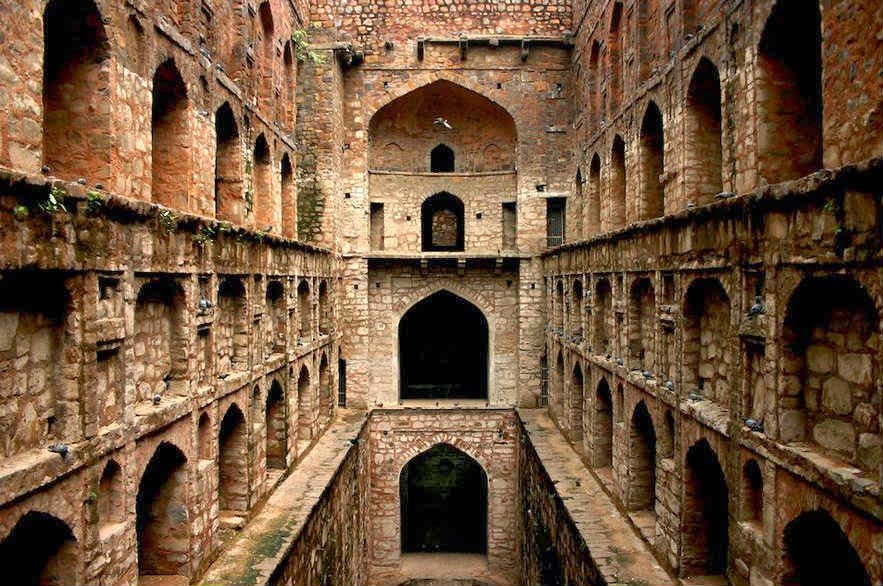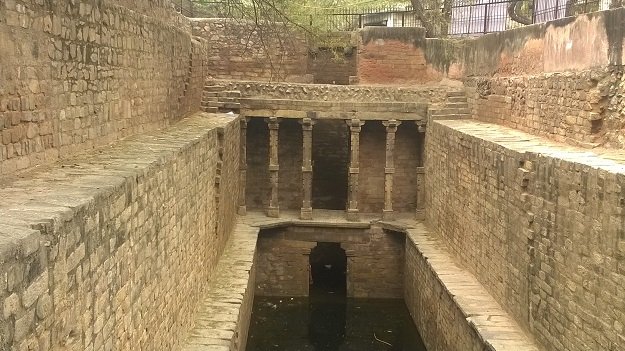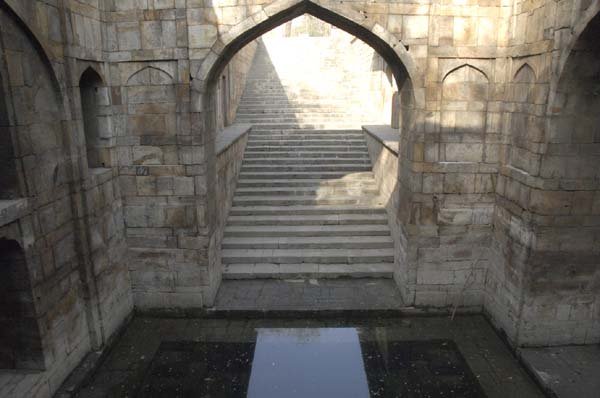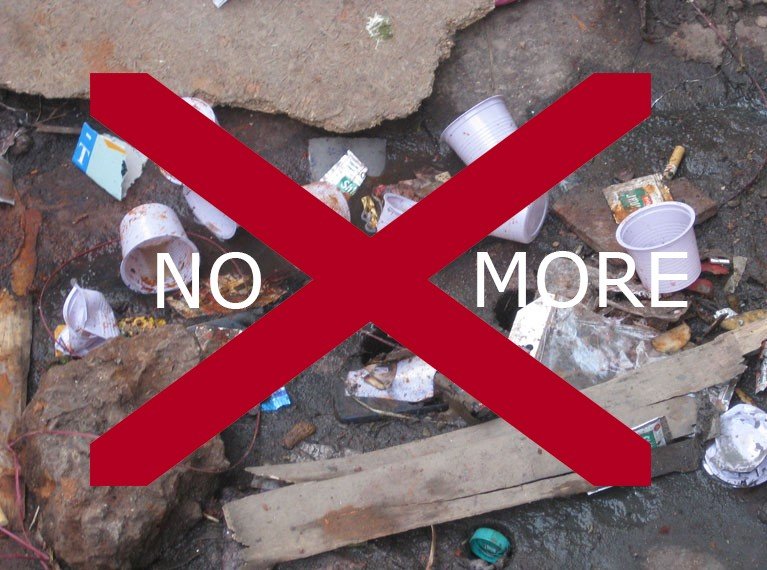Squeaky chatter of bats, gurgling sound of pigeons and echoing off the stone walls. The aura of a baoli is calm and thrilling.
Baoli or stepwell means a man-made pond which has a series of steps leading to ground level where water is stored. These edifices of the ancient architecture are not only a part of history books but Delhi’s precious pieces that have been present since ages.
1. Agrasen ki Baoli
Also known as Ugrasen ki Baoli is amidst the high rises of CP which became a popular tourist destination after Aamir Khan’s PK. The centuries old baoli has an impressive design of 4 levels with 108 steps leading down to the well. It is also amongst the top 10 haunted places of India and has stories of people disappearing mysteriously around it.

Where: Hailey Road, Near Diwanchand Imaging Centre, K G Marg, New Delhi
2.Rajon ki Baoli
It is said to be used by Raj Mistris (masons) hence it has got the name Rajon ki Baoli. It is one of the relics of the last pre- Mughal dynasty—The Lodhis. The three- storeyed stepwell has beautiful calligraphic inscriptions of Quran. Climb its roof and you will realize the exquisiteness of the structure.

Where: Mehrauli Archeological Park Trail, Mehrauli Village, Mehrauli, New Delhi
3. Gandhak ki Baoli
The neighboring stepwell of Rajon ki Baoli was built during the early 13th century and thus is one of the oldest baolis of Delhi. Its name originated from the presence of sulphur (gandhak) in its water which was a cure to many skin diseases. The five- tiered structure and the well on its South side have a striking design.

Where: Mehrauli Village, Mehrauli, New Delhi
4. Baoli at Hazrat Nizamuddin’s Dargah
The baoli was once known as Chashma Dilkusha meaning heart uplifting spring. The 14th century Baoli was constructed under the supervision of Nizamuddin himself as thus its water is believed to be sacred having healing powers.

Where: T-395/2-D, Dildar Nagar, Nizamuddin West, New Delhi
5. Firoz Shah Kotla Baoli
Its circular structure and a pulley system with pipes and channels instead of steps, makes this baoli unique and distinctive. Surrounded by a neat lawn, the baoli still has water after 700 years of construction which is used to irrigate the gardens of Firoz Shah Kotla.

Where: Vikram Nagar, New Delhi
6. Baoli at Purana Qila
A classic example of how water management was done in the medieval times; the water in the baoli was mainly fed by rainwater. The baoli has a steep flight of 89 steps and 8 landings which allowed people to descend to the baoli to fetch water.

Where: Mathura Rd, Pragati Maidan, New Delhi
7. Lal Qila Baoli
It is believed to be constructed before the Red Fort. Its beautifully arched chambers were used as a prison by the Britishers. The ‘L’ shaped structure of the baoli and its neat and identical stone walls is truly intriguing.

Where: Lal Qila, Chandni Chowk, New Delhi


